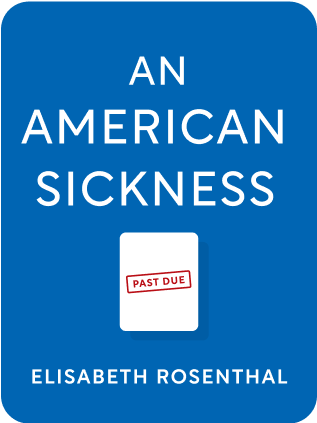

This article is an excerpt from the Shortform book guide to "An American Sickness" by Elisabeth Rosenthal. Shortform has the world's best summaries and analyses of books you should be reading.
Like this article? Sign up for a free trial here .
How are prices determined in the U.S. healthcare system? How do doctors bill for their services?
In the United States, prices for medical procedures are determined by the American Medical Association of Physiology (AMA). Once set, the Relative Value Units (RVUs) have systemic national implications, nudging doctors toward performing the higher compensated procedures. In addition, doctors have their own methods to fluff up the patient’s bill.
This article takes a look at the pricing in healthcare, including the strategies that doctors themselves use to bill their patients.
Relative Value Unit (RVU) Pricing
Because medical care constantly changes, the Medicare RVU (Relative Value Unit) system requires constant updating. American national health insurance program Medicare assigned the responsibility of setting RVUs to the AMA (American Medical Association of Physiology).
Three times a year, the AMA convenes the Relative Value Scale Update Committee (RUC), which operates like a senate serving 26 specialties. Otolaryngology gets 1 representative, general surgery gets 1 representative, and so on.
In these meetings, the different specialties deliberate on how much they should get paid for each procedure they do. As you might expect, there is plenty of politicking involved.
- Some of the factors used in determining RVUs are determined by survey—for instance, for the time component of RVUs, doctors are surveyed on how much time they spend on a procedure. In effect, setting pricing in healthcare is like asking the doctors if they’d like to be paid more.
- RUC reps will use their best paying procedures as a yardstick to boost other procedures.
- Medicare sets a legal cap to physician payments, so specialties have to negotiate among themselves for adjustments to compensation. If one specialty wins, another has to lose.
The RUC minutes and votes are public, as shown here.
If this system behaves like a typical economic system, perverse incentives are likely at play here. Imagine how a new medical device might be adopted.
- Device manufacturers game the metrics to get higher RVUs for new procedures, pushing more complicated procedures that need more training and longer procedure times.
- Manufacturers then influence doctors into supporting their device through sales meetings and discounts.
- Doctors push for higher RVUs at the RUC meeting.
- Higher RVUs get more doctors on board, which get more patients on board.
- Over time, the procedure becomes entrenched, despite evidence of no advantage in patient outcomes.
The AMA also earns directly from being in charge of the RVU system. They have copyrighted the billing CPT codes and charge license fees to anyone wishing to associate RVU values with CPT codes. This earns them $70 million a year!)
Strategies to Increase Physician Pay
Like hospitals and insurers, physicians do what they can to increase their pay. Here are a variety of methods that doctors use.
Own Their Own Businesses, Avoid Contracts with Insurance
Doctors have created their own businesses to negotiate better terms with insurers.
For example, doctors have created ambulatory surgery centers, which are large enough to allow billing for facility fees. This means that procedures that could have been done in doctors’ offices were moved into the more expensive surgical centers, without any apparent increase in outcome.
The centers themselves don’t participate in insurance networks, so their fees aren’t constrained by insurers’ negotiated rates.
Doctors have also formed LLCs to provide services, then contracted with hospitals. These are especially popular in the specialties of pathology, anesthesiology, radiology, and emergency medicine (PARE). The gain is mutual—by contracting services, hospitals avoid the overhead of malpractice and staffing. It also increases the ability to separate billing and maximize reimbursements. Similarly, these LLCs also evade contracts with insurance, which often means out-of-network payments for patients.
Special Contracts with Hospitals
Federal regulation requires hospitals to treat all patients showing up in their emergency rooms. But this regulation doesn’t apply to physicians, who can pick and choose which patients to see.
Thus, hospitals contract with doctors to cover the ER; in exchange, doctors can bill however they like. The contracted doctors might be out of network. So even if you as a patient show up to a covered hospital’s emergency room, the doctors’ bill might not be covered.
Maximize Time Billed
A multitude of practices allow doctors to bill for more time in questionable ways. These include:
- Physician extenders (nurse practitioners, technicians, physician assistants) help doctors bill as though they were personally dispensing the care. In other words, even if you’re treated by a technician, you might be billed for the actual doctor’s time.
- This allows physicians to open satellite offices entirely staffed by assistants.
- The history of this was well-meaning: combat medics returning from the Vietnam War prompted physician assistant programs to be started. The idea was to improve care and give doctors a break to attend career training.
- Multiple overlapping appointments
- A dermatologist can charge for biopsies in multiple offices simultaneously.
- An anesthesiologist can supervise 4-6 operating rooms at once.
- A doctor can stop by your room, ask a few questions, then bill for a full appointment.
- Itinerant surgery: surgeons move between a large number of operating rooms and hospitals, collecting fees for surgery but not following up with the patients.
There have been counters to these practices: Medicare now requires surgeons to be present for key parts of operation, and physician assistants can bill at 15% of the surgeon’s rate.
But no matter the incentive, doctors will take advantage. For example, in oncology infusion, Medicare paid for the first 90 minutes of the infusion, then a second part for any part of the hour after. This led to a suspicious number of 91 minute infusions.
And to bill, technically doctors have to be present in the office for the first 15 minutes of infusion. Not only is this hard to police, but it likely leads to doctors hanging around and checking their watch without improving outcomes.
Buy and Bill
In the U.S., oral drugs can be dispensed only by pharmacies and not sold by doctors. However, IV and injectable drugs can be billed by doctors. This leads doctors to buy drugs and bill them with a markup.
Even better, doctors get incentives from pharma (such as free samples, rebates, administrative fees, and grants) to drive adoption of a drug. Doctors then bill for drugs at full price, with a set percentage for markup. Clearly, doctors have an incentive to prescribe more expensive drugs that pay them more, even if they don’t necessarily lead to better patient outcomes.
It works out even better if administering the drug comes with a new procedure to bill for. Here’s a story about Lupron, a hormone treatment.
Prostate cancer patients often had their testicles surgically removed to remove testosterone and limit cancer growth. Instead of castration, Lupron biologically blocked the influence of testosterone. It could be administered at home with subcutaneous injections. However, sales were not a blockbuster.
Lupron manufacturer Takeda then came out with Lupron Depot, a longer-acting formulation that needed to be injected into muscle, and thus required a doctor’s involvement. The strategy was to give doctors a new procedure to bill and allow sales from drug.
To increase adoption of Lupron Depot in the face of cheaper alternatives, Takeda provided free samples doctors could then bill at full charge. It also offered grants and kickbacks to doctors to prescribe Lupron. Finally, it inflated the wholesale price that Medicare reimburses at (for which they were fined hundreds of millions of dollars.)
Even though Takeda was forced to pay a fine, no criminal penalties were assigned to doctors. Even today, doctors are paid administrative fees to market new drugs.
Upgrades
Doctors push patients to choose higher-priced procedures.
For example, cataract treatments have become very standard and reimbursements have fallen. Enter the femtosecond laser. Medicare wouldn’t reimburse extra for the laser, so ophthalmologists pushed patients to upgrade and pay out of pocket.
This would be fine if patients could make educated decisions about what treatments are most cost-effective for them, but they can’t. Patients have little pricing and quality info to compare across interventions. In effect, they are paying for things unrelated to outcomes, like how much they trust their doctor and what positive emotions they feel.
Doctors also find ways to bill more to provide extra services, such as retainer fees, same-day answer services, or fees for writing prescriptions.
Switch to Surgical Procedures
As we’ve seen, surgical procedures earn higher billing. As a result, non-surgical doctors increasingly do procedures, even if they’re not formally trained in it.
For example, nephrologists have laregly outsourced dialysis, which is commoditized and doesn’t pay well. But now they perform surgical procedures to create a fistula for vascular access. Traditionally, these have been performed by vascular surgeons with years of training, but nephrologists are taking this over.
What to Do About Doctors’ Bills
- Ask questions about what the care will cost you, before you make your decision.
- Questions to ask a new doctor
- Is the practice a surgery center or owned by a hospital? Will facility fees be charged?
- Will you refer me only to providers in my insurance network?
- Can you send my testing to an in-network lab?
- What extra fees are there? Phone calls, annual fees?
- Will you see me in the hospital if I’m hospitalized? Can I reach you on weekends?
- Questions to ask during a visit
- How much will this treatment cost? Then when you get home, search online for a ballpark range for your local area.
- How will this test/exam/surgery change my treatment?
- If there’s no reasonable justification, pass on treatment.
- Where will this test/exam/surgery be performed, and how does that affect the price?
- Are you an owner of the place you’re referring me to?
- Are there cheaper alternatives that are equally good?
- Who else will be involved in treatment? Will I get a separate bill from another provider?
- If you find a surprisingly high price in your research, tell your doctor. She may not have known.
- Wait before getting treatment.
- Many symptoms resolve themselves.
- Unnecessary scans and tests get insignificant findings that might prompt unnecessary care.
- MRIs of middle-aged people can show bulging disks even if the patient feels no back pain. These don’t require treatment, but many get worried and do opt for unnecessary treatment.
Systemic Changes to Demand
- Demand more transparent pricing before care
- When given the choice between two differently priced treatments, most patients choose the cheaper one, even if insurance covers both.
- Doctors need to see prices when placing orders—this will make them avoid unnecessary tests and find alternatives for overpriced treatments. Hospitals should release their master list of prices to staff.
- Providers and insurers contractually cover their negotiated rates under a non-disclosure agreement. Some states have declared these illegal.
- Reform malpractice lawsuits
- 80% of doctors will be named in a malpractice lawsuit by the time they become 60 years old.
- Place limits on noneconomic damages.
- In California, there is a $250k limit for indirect damages like emotional suffering.
- Encourage arbitration instead of lawsuits. This will decrease time to payment and legal fees for both sides.
- Offer warranties and guarantees for treatments. Some surgery centers guarantee care of complications with no additional charge.
- Medical education
- Finance medical school to deter doctors from feeling like economic victims, which leads to overbilling for the sake of compensation.
- Give loan forgiveness for doctors who enter low-paying specialties or work in underserved areas.

———End of Preview———
Like what you just read? Read the rest of the world's best book summary and analysis of Elisabeth Rosenthal's "An American Sickness" at Shortform .
Here's what you'll find in our full An American Sickness summary :
- How U.S. healthcare got to the state it's in today
- Why it's so difficult to make any changes to the healthcare system
- What you can do to lower your personal healthcare costs






